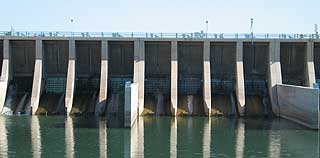The U.S. refineries represent approximately 23 percent of the world’s petroleum production, and the United States has the largest refining capacity in the world, with 163 refineries. In 1996, U.S. refineries supplied over 18 million barrels per day of refined petroleum products. The total annual direct cost of corrosion is estimated at $3.7 billion. Of this total, maintenance-related expenses are estimated at $1.8 billion, vessel turnaround expenses at $1.4 billion, and fouling costs are approximately $0.5 billion annually.
Petroleum refining is an industry, which is undergoing intense amounts of scrutiny in the United States from regulatory agencies and environmental groups. As a result, releases of pollutants caused by corrosion leaks are becoming a high consequence event. The Clean Air Act of 1990 has forced refiners to implement a number of costly measures to reduce their impact on the environment, both with the types of products they produce and the manner in which they operate their refineries.
Industrial Corrosion Costs Billions
Corrosion is a problem in civilian society, but it’s also an issue in the industrial sphere. For instance, most industrial designs for oil/gas machines fail to take into account the effects of corrosion over the lifespan of the equipment. Outside the US, there are also reports of gas companies claiming their pipelines ruptured due to corrosion damage. Corrosion can lead to oil spills that have a severe impact on the environment. In effect, corrosion not only affects the oil industry but it affects the global environment.
There are also additional costs for resources that are necessary to clean up the environmental mess, and permanent ecological damage can be caused as a result of corrosive defects. The possibility of corrosion occurring in any industrial plant is a major point of concern for lead mechanical engineers and chemists at petroleum and chemical factories. Moreover, corrosion can even affect the quality of the oil. Corrosion can also leave a mark on the chemistry of a chosen process and the final product of corrosion can also affect the reaction and the purity of the products.
Corrosion Science In Gas/Oil Industries
In the oil industry, corrosion tends to happen when the steel of the industrial equipment comes in contact with pre-existing rusts and moisture/aqueous environments. Similar to the chemical reactions that unfold on cars when the metal is exposed to the elements, it produces a new molecule that leads to corrosion.
Once the metal of the machines is exposed to electrolytes, the metal atoms on the anode site start losing electrons, and these electrons get absorbed by atoms from the cathode site. The cathode that absorbed the electrons starts to conduct an exchange contact with the electrolyte. This way, it can balance out the positive and negative charges of the electrons. Positively charged ions are released into the electrolyte, which capable of bonding with other negatively charged atoms.
Monetary Impact Of Corrosion In Industry
- In the US oil/gas industry, $589 million is spent on surface pipeline and facility costs.
- $463 is spent in down hole tubing expenses annually.
- $320 is spent in capital expenditures to prevent corrosion.
- Estimates say that corrosion costs in industrial nations can cause damages to up to 3-5% of the country’s GDP.
It is estimated that the oil/gas industry loses tens of billions of dollars each year only on treatment costs that are directly or indirectly tied to corrosion. While corrosion costs in the US industry may amount to up to $170B per year, the oil/gas industry is estimated to suffer more than 50% of the damages. The biggest problems in the oil and gas industry are internal corrosion that occurs in wells and pipelines. Corrosion is mostly caused by the influence of the elements such as temperature, water chemistry, flow velocity, steel condition, and CO2 and H2S content.
If oil/gas companies invest in the reduction of corrosion, this can lead to an increase in the component life for the equipment which significantly decreases their long-term maintenance costs. The oil/gas industry heavily relies on components that are made from carbon steel alloys. Lately, the industry is shifting from carbon alloys into more corrosion-resistant alloys for the anti-corrosive benefits.

